Special Report
10 of the Deadliest Natural Disasters in the World Since 1980
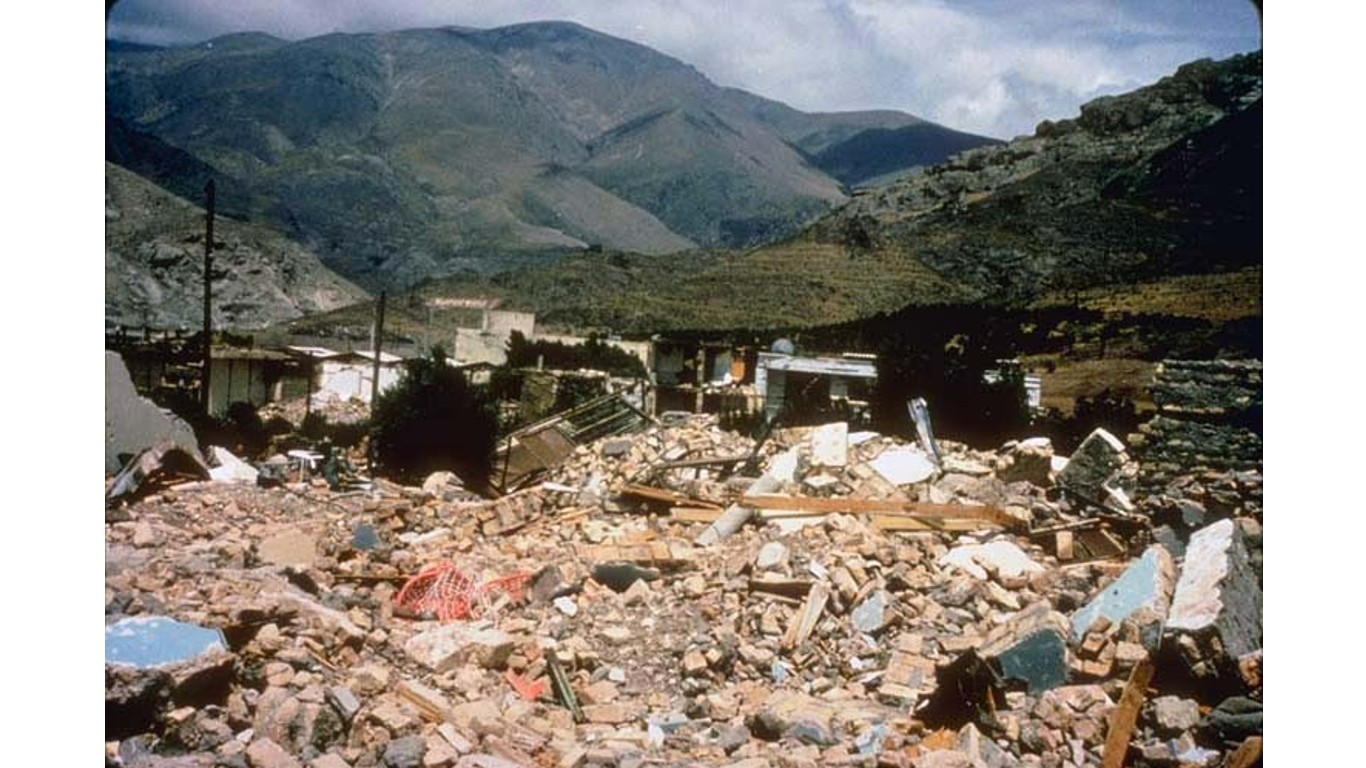
Published:

An earthquake in China’s west-central Sichuan province struck this Sept. 5, killing more than two dozen people, injuring hundreds more, and damaging thousands of homes. The moderately strong earthquake was the second to strike the province since 2017, when a quake centered around the town of Zhangzha induced similar damages.
Neither of these quakes compare to one that struck beneath Sichuan’s provincial capital of Chengdu on May 12, 2008. That much larger quake delivered a direct strike under a more densely populated area, and sent waves that were felt by residents of Shanghai, more than 1,000 miles away. About 88,000 people in and near the epicenter were killed in one of the most destructive earthquakes ever recorded. (These are the countries in which the most people have died in natural disasters.)
Earthquakes are the most common natural disasters to wreak such extensive mayhem. Cyclones (or hurricanes, as they’re called in the Western Hemisphere) and months-long heat waves also feature prominently among deadly natural disasters.
To compile a list of 10 of the deadliest natural disasters since 1980, 24/7 Tempo reviewed information compiled by the consumer data site Statista, covering natural disasters occurring through January 2022 – though no disasters deadly enough to qualify for inclusion in our list date from later than 2010.
Click here to see 10 of the deadliest natural disasters in the world since 1980
Of the ten deadliest natural disasters since 1980, six of them were earthquakes, including the Sichuan quake of 2008, and two that rattled Iran (in 1990 and 2003). Two were cyclones that struck Bangladesh and Myanmar in 1991 and 2008, respectively, and two were intense heat waves that struck Europe in 2003 and 2010. (These are the most powerful earthquakes ever recorded.)
Taken together, these 10 disasters killed more than a million people and laid waste to homes, buildings, farmlands, and infrastructure.
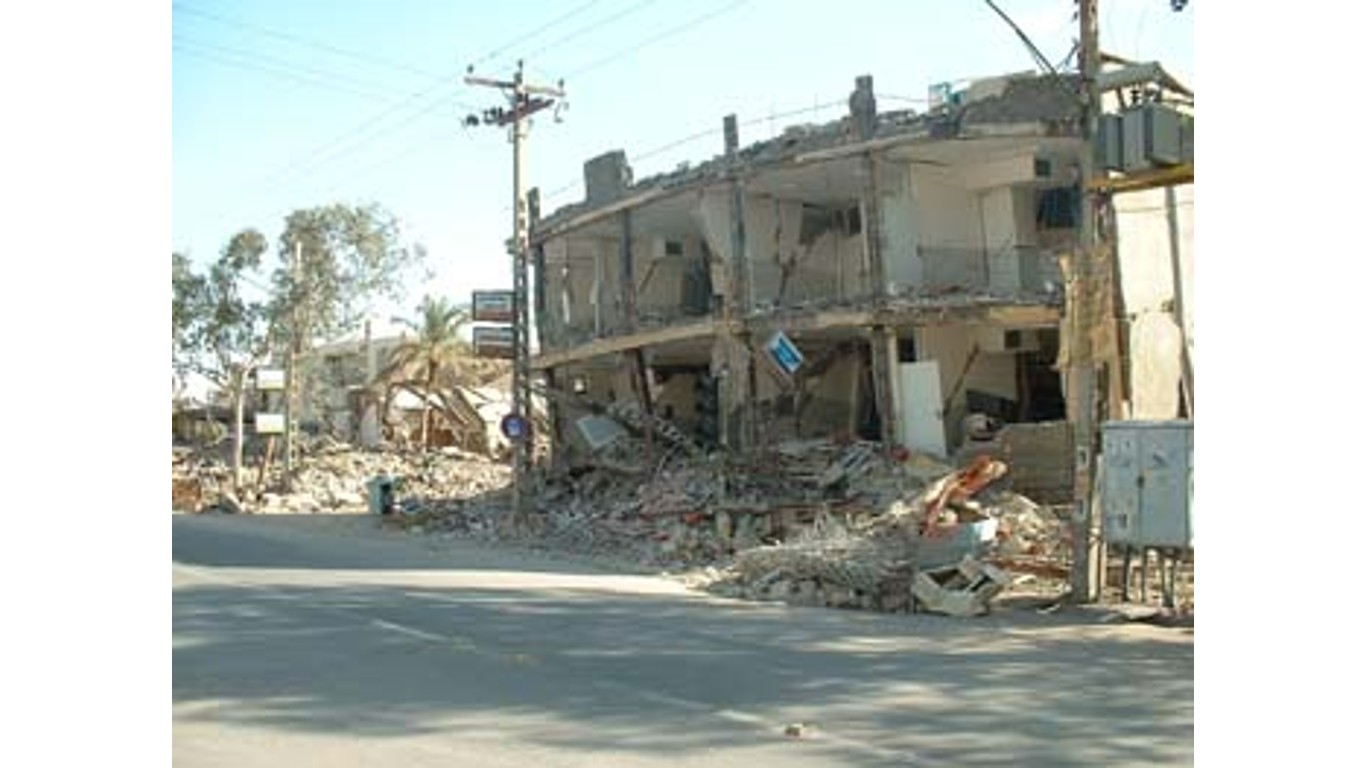
10. Earthquake in Iran
> Date: Dec. 26, 2003
> Est. death toll: 26,200
A magnitude 6.5 earthquake rattled Iran’s Bam district and surrounding area in the southeast of the country. Most of the buildings in the area were leveled due to their mud-brick construction. The death toll was made worse because the earthquake struck early in the morning when people were still asleep indoors. Low wintertime temperatures made life difficult for the survivors who lost their homes, and heavy sandstorms at the time hampered relief efforts.
[in-text-ad]

9. Earthquake in Iran
> Date: June 20, 1990
> Est. death toll: 40,000
A magnitude 7.4 earthquake shook the Rasht-Qazvin-Zanjan area of northwestern Iran near the Caspian Sea in what the U.S. Geological Survey calls “one of the world’s most destructive earthquakes.” As with the quake that struck southeastern Iran in 2003, the death toll was made worse because it struck overnight while people were at home asleep. The quake leveled every building and killed every resident in one 80-mile stretch of the affected area. An aftershock the following morning burst a dam in the coastal city of Rasht, drowning large swaths of farmland.
8. Heat wave in Russia
> Date: July-Sept. 2010
> Est. death toll: 56,000
Western Russia withered under an intense and fatal months-long heatwave that the U.S. National Oceanic and Atmospheric Administration called the most extreme heatwaves to hit the region on record. It was by far the worst of a larger weather trend that baked regions in several Northern Hemisphere countries that year. The weather event had far-reaching implications as it destroyed much of the country’s grain harvest in one of the world’s most important sources of wheat, on which many African and Middle Eastern countries depend.
7. Heat wave, drought in Europe
> Date: July-August 2003
> Est. death toll: 70,000
The summer of 2003 baked Europe from Spain to the Czech Republic and from Germany to Turkey, with maximum temperatures topping 100º F multiple times from mid-July through August. Summer temperatures were as much as 30% above the seasonal average over much of the continent. On Aug. 10, Britain recorded its highest temperature on record of nearly 101º F. France suffered temperatures that hovered mostly above 100º F for two straight weeks, while Switzerland shattered its all-time high temperature record with a reading of nearly 107º F.
[in-text-ad-2]
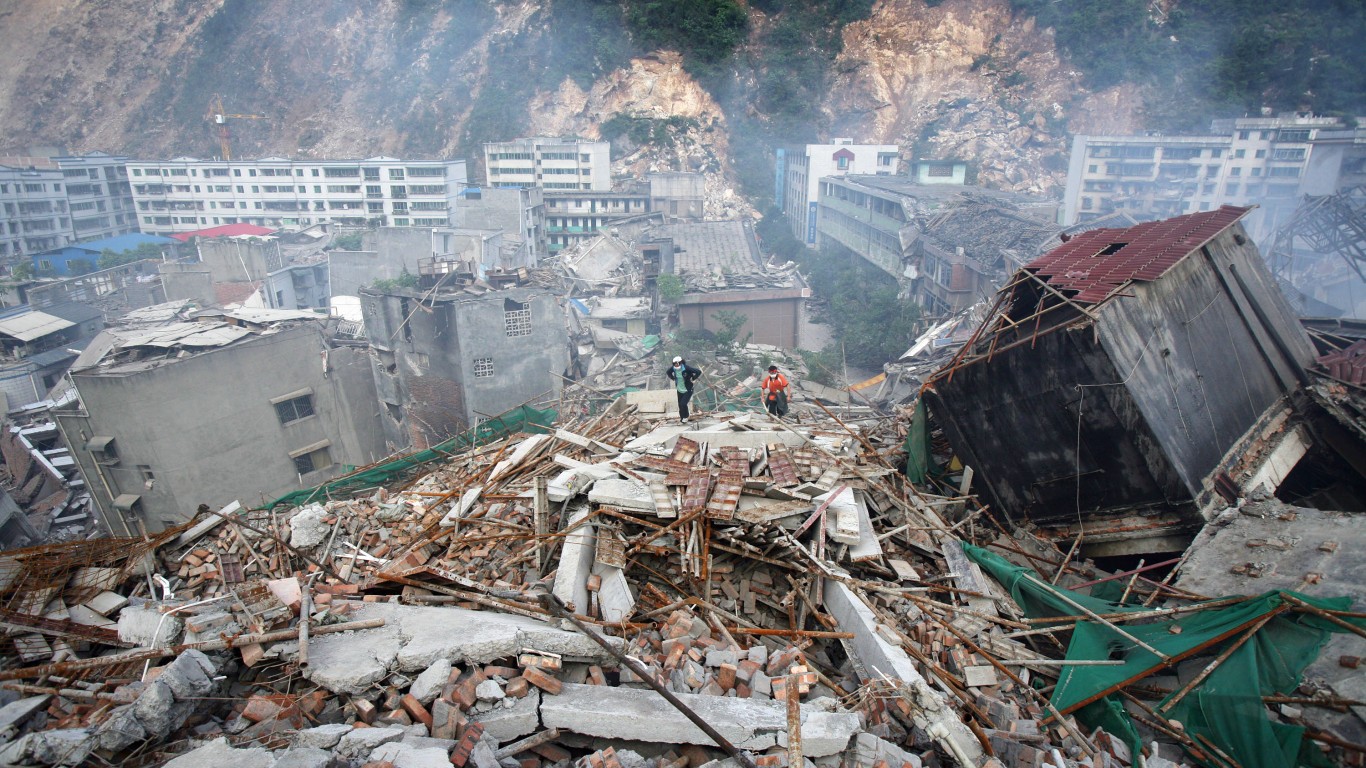
6. Earthquake in China
> Date: May 12, 2008
> Est. death toll: 88,000
The 7.9-magnitude Great Sichuan Earthquake, struck the southwestern Chinese province of Sichuan, with an epicenter near the provincial capital of Chengdu. Tremors were felt more than 1,000 miles away in Shanghai. The quake induced massive landslides that toppled buildings, leaving millions of people homeless.
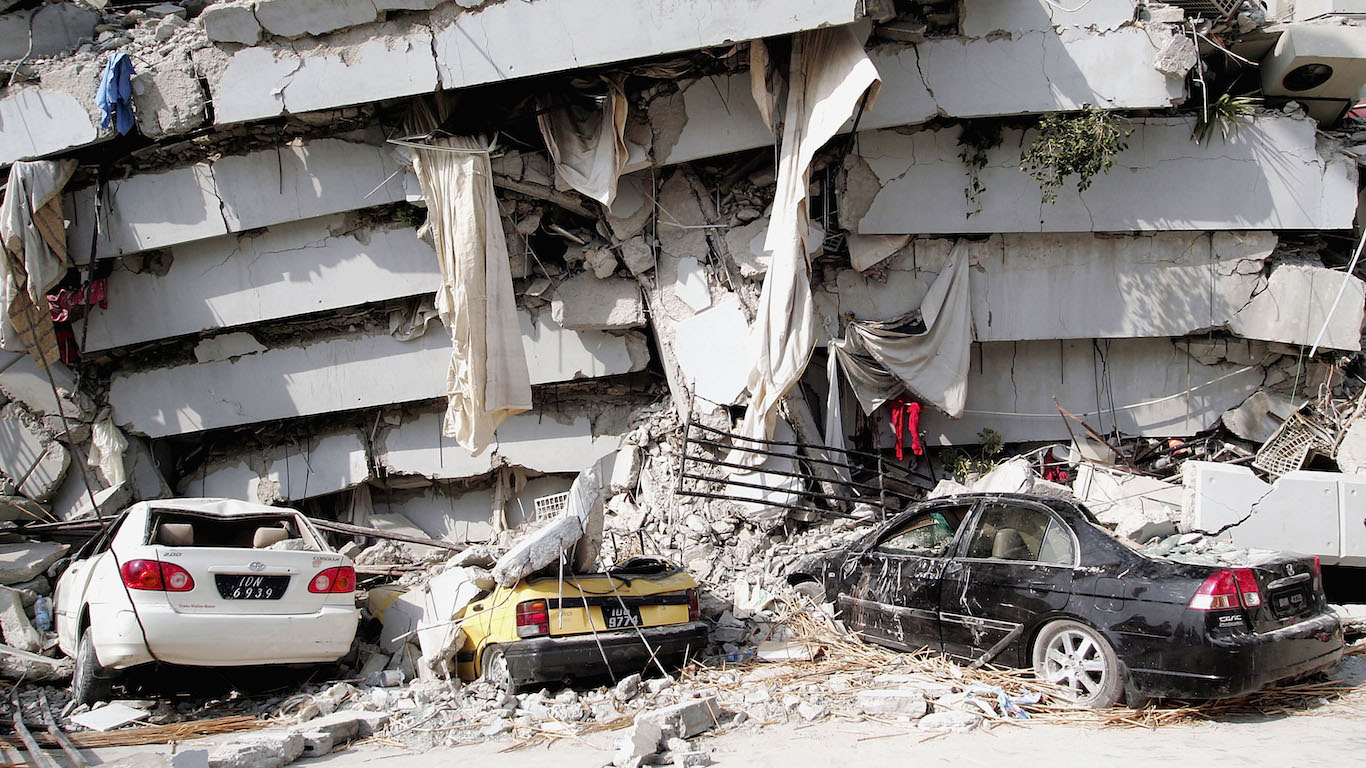
5. Earthquake in Pakistan
> Date: Oct. 8, 2005
> Est. death toll: 88,000
A 7.6-magnitude earthquake struck northern Pakistan, inflicting extensive damage in and around the city of Muzaffarabad. Entire villages were leveled and more than 32,000 buildings collapsed across much of the country and into northern India, where thousands were killed or injured. Parts of Afghanistan and Bangladesh were also rattled. About four million people lost their homes in the quake.
[in-text-ad]
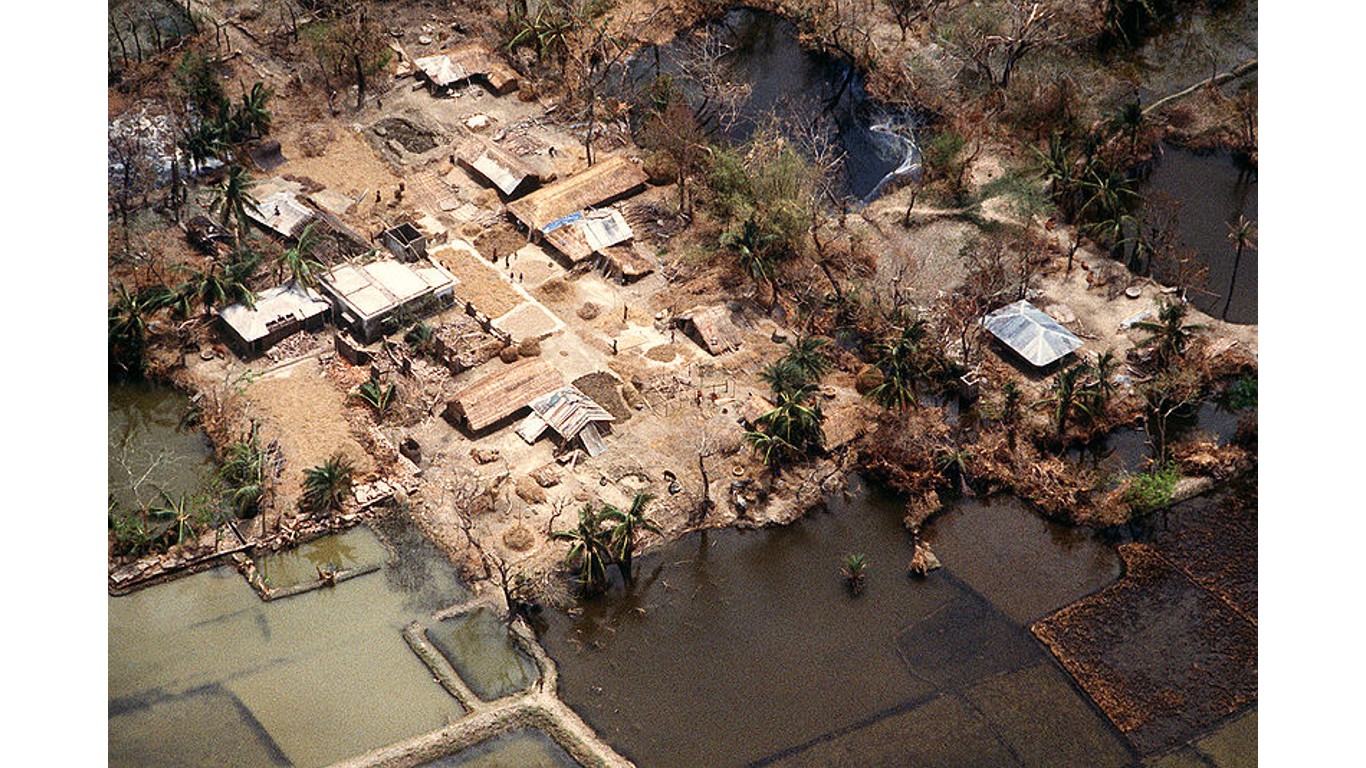
4. Cyclone Gorky, storm surge in Bangladesh
> Date: April 29-30, 1991
> Est. death toll: 139,000
Cyclone Gorky made landfall in Bangladesh on the evening of April 29, bringing with it tidal surges as high as 30 feet. The highly destructive category-5 storm hovered over the country’s lowlands for hours, dumping a massive amount of rainfall on impoverished communities living at or near sea level. Cyclone shelters prevented more deaths than would have occurred, but there weren’t enough of them to meet demand, leaving many people with nowhere to flee.
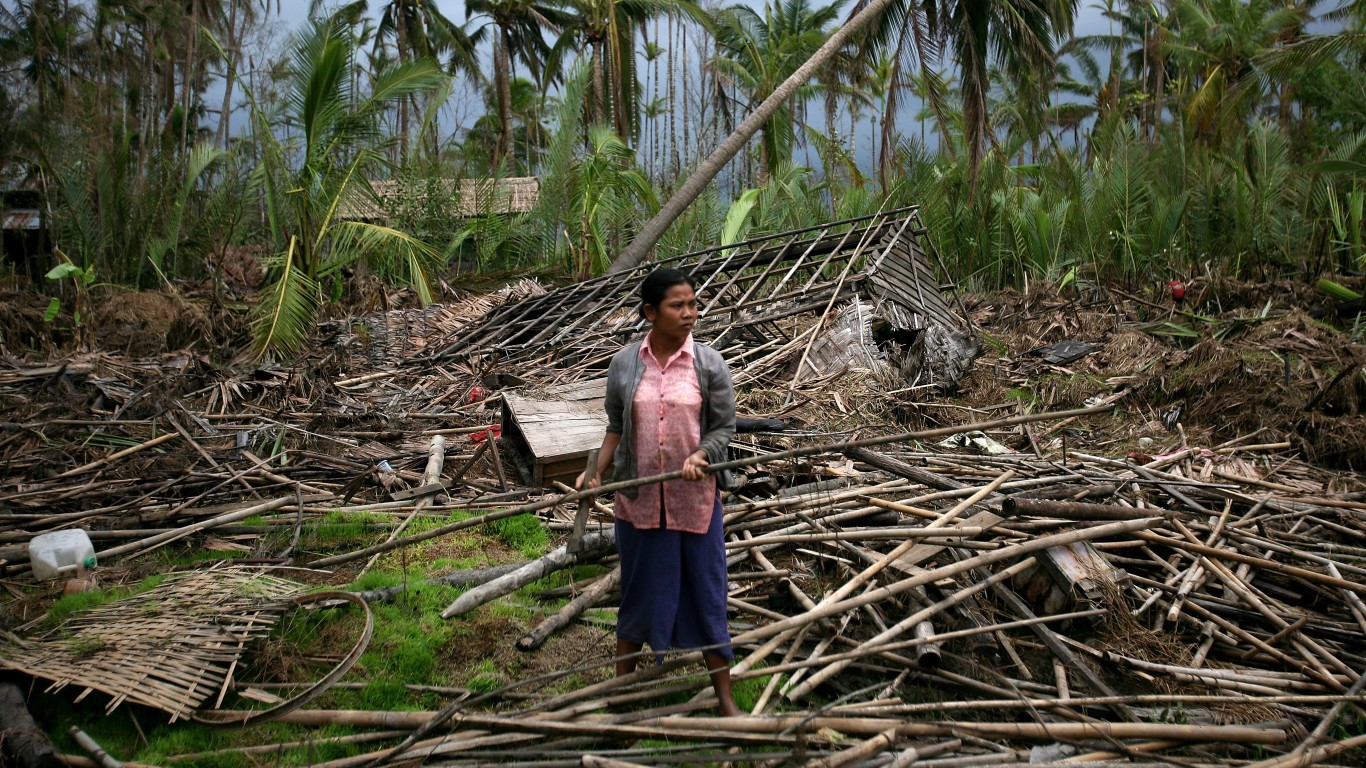
3. Cyclone Nargis, storm surge in Myanmar
> Date: May 2-5, 2008
> Est. death toll: 138,000
After forming into a massive category-4 storm over the Bay of Bengal, Cyclone Nargis plowed into Myanmar (Burma) with sustained winds of 130 miles per hour. The storm path traveled over the country’s heavily populated city of Yangon (Rangoon). The cyclone caused extensive flooding in the city and nearby coastal plains.
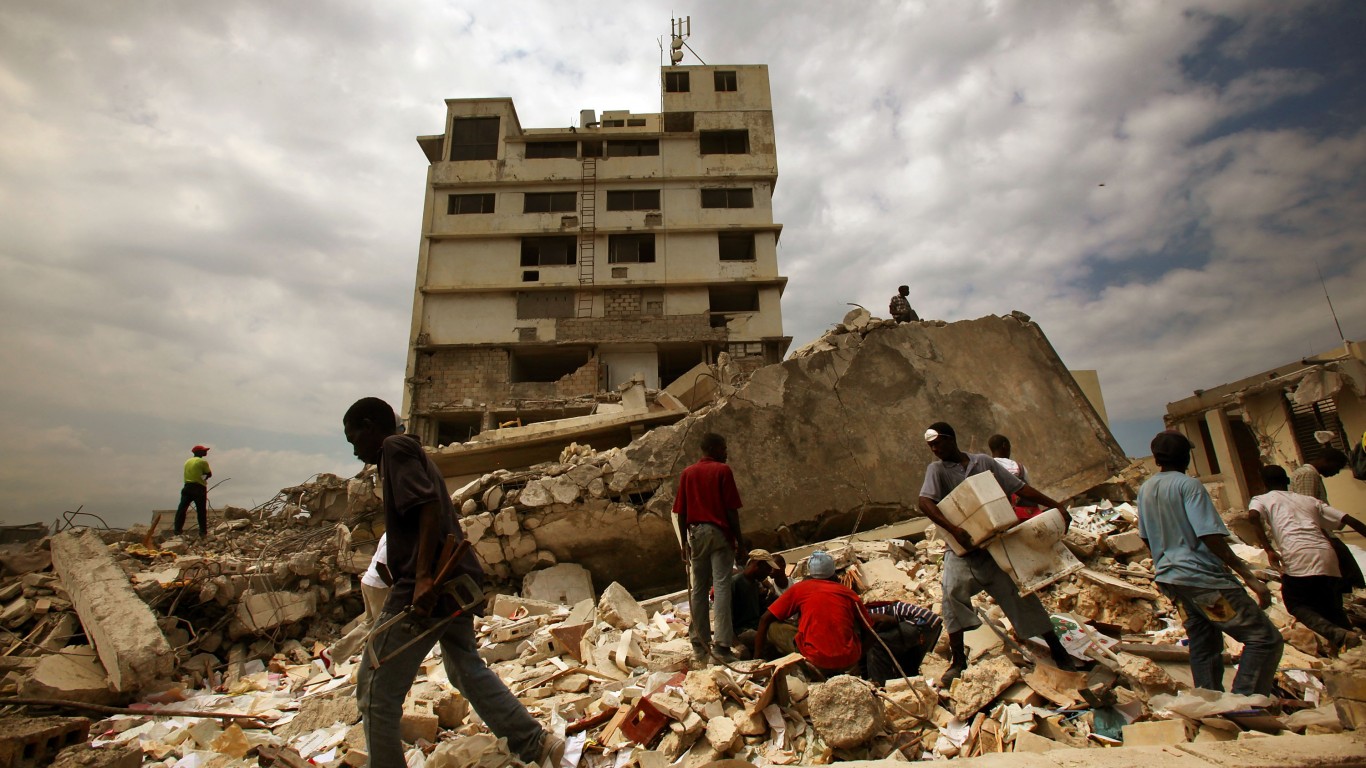
2. Earthquake in Haiti
> Date: Jan. 12, 2010
> Est. death toll: 160,000
The 2010 Haiti earthquake is the only natural disaster on this list to have hit the Western Hemisphere. The magnitude 7.0 quake toppled homes and commercial buildings. It was followed by dozens of aftershocks. One-story homes topped with sheet metal fared better than structures with concrete rooftops, such as apartment complexes, churches, commercial centers, and government buildings that lacked earthquake-resistant features.
[in-text-ad-2]
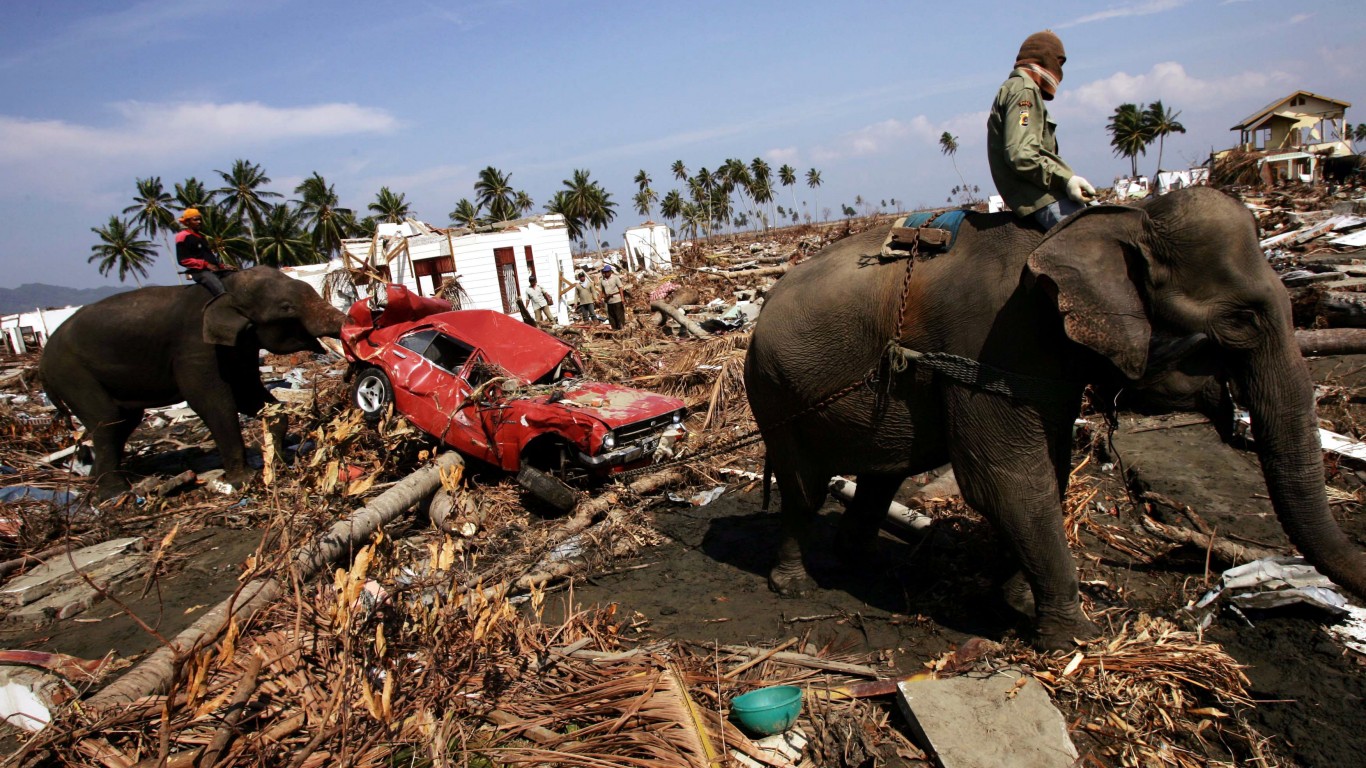
1. Earthquake, tsunami in the Indian Ocean
> Date: Dec. 26, 2004
> Est. death toll: 228,000
An enormous undersea fault line off Indonesia’s western coast slipped, causing one of the strongest earthquakes ever recorded. The 9.1-magnitude quake sent a portion of the seafloor shooting upwards as much as 131 feet, causing a massive tsunami that caused rapid and destructive coastal flooding in nine countries. Within 20 minutes of the quake, 100-foot-tall waves drowned the shoreline of Banda Aceh at the northeastern tip of Sumatra, Indonesia, which bore the brunt of the disaster. Successive large waves struck the coasts of Thailand, India, Sri Lanka, and Somalia, and caused deaths as far away as South Africa.
The average American spends $17,274 on debit cards a year, and it’s a HUGE mistake. First, debit cards don’t have the same fraud protections as credit cards. Once your money is gone, it’s gone. But more importantly you can actually get something back from this spending every time you swipe.
Issuers are handing out wild bonuses right now. With some you can earn up to 5% back on every purchase. That’s like getting a 5% discount on everything you buy!
Our top pick is kind of hard to imagine. Not only does it pay up to 5% back, it also includes a $200 cash back reward in the first six months, a 0% intro APR, and…. $0 annual fee. It’s quite literally free money for any one that uses a card regularly. Click here to learn more!
Flywheel Publishing has partnered with CardRatings to provide coverage of credit card products. Flywheel Publishing and CardRatings may receive a commission from card issuers.
Thank you for reading! Have some feedback for us?
Contact the 24/7 Wall St. editorial team.